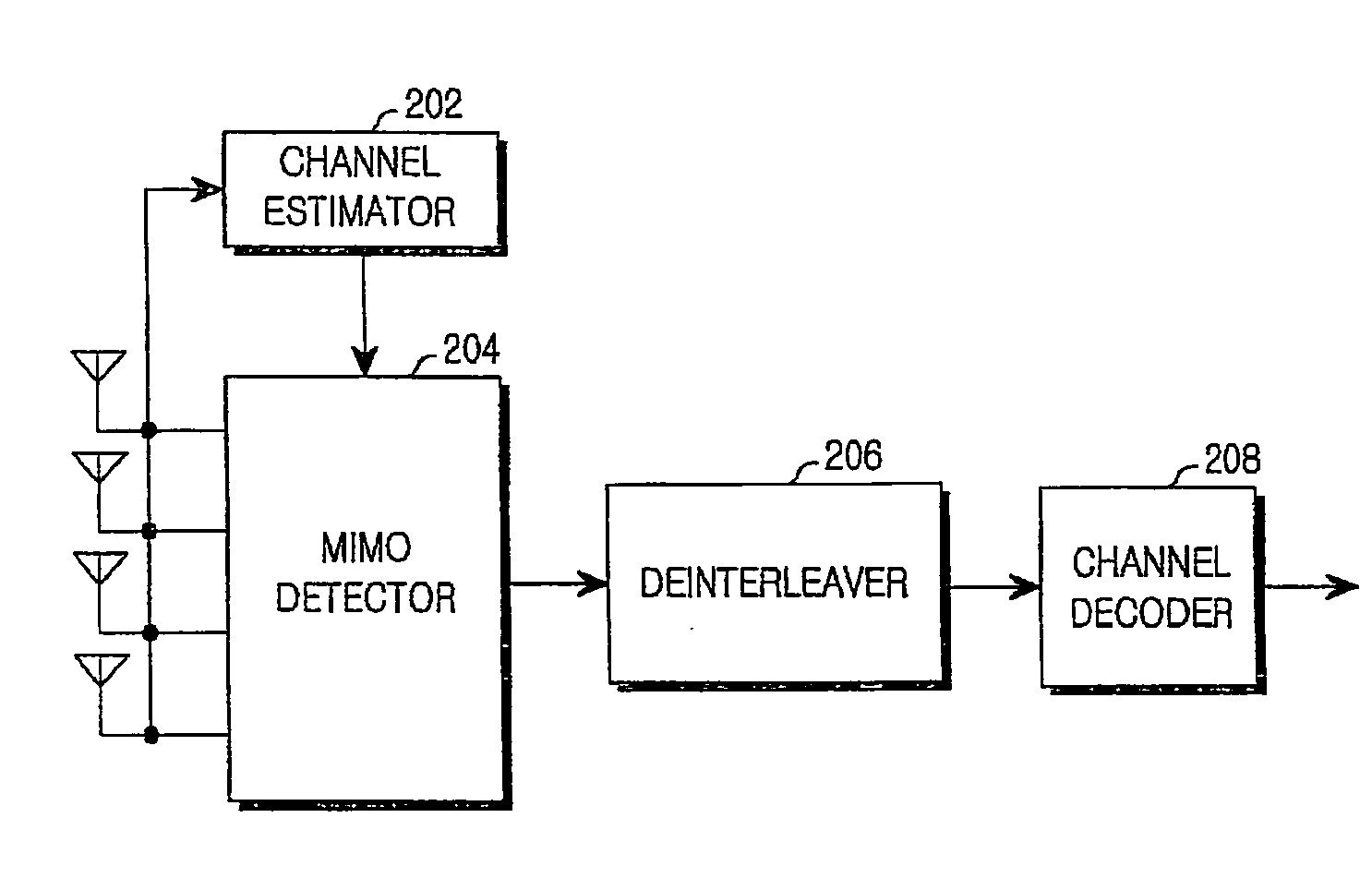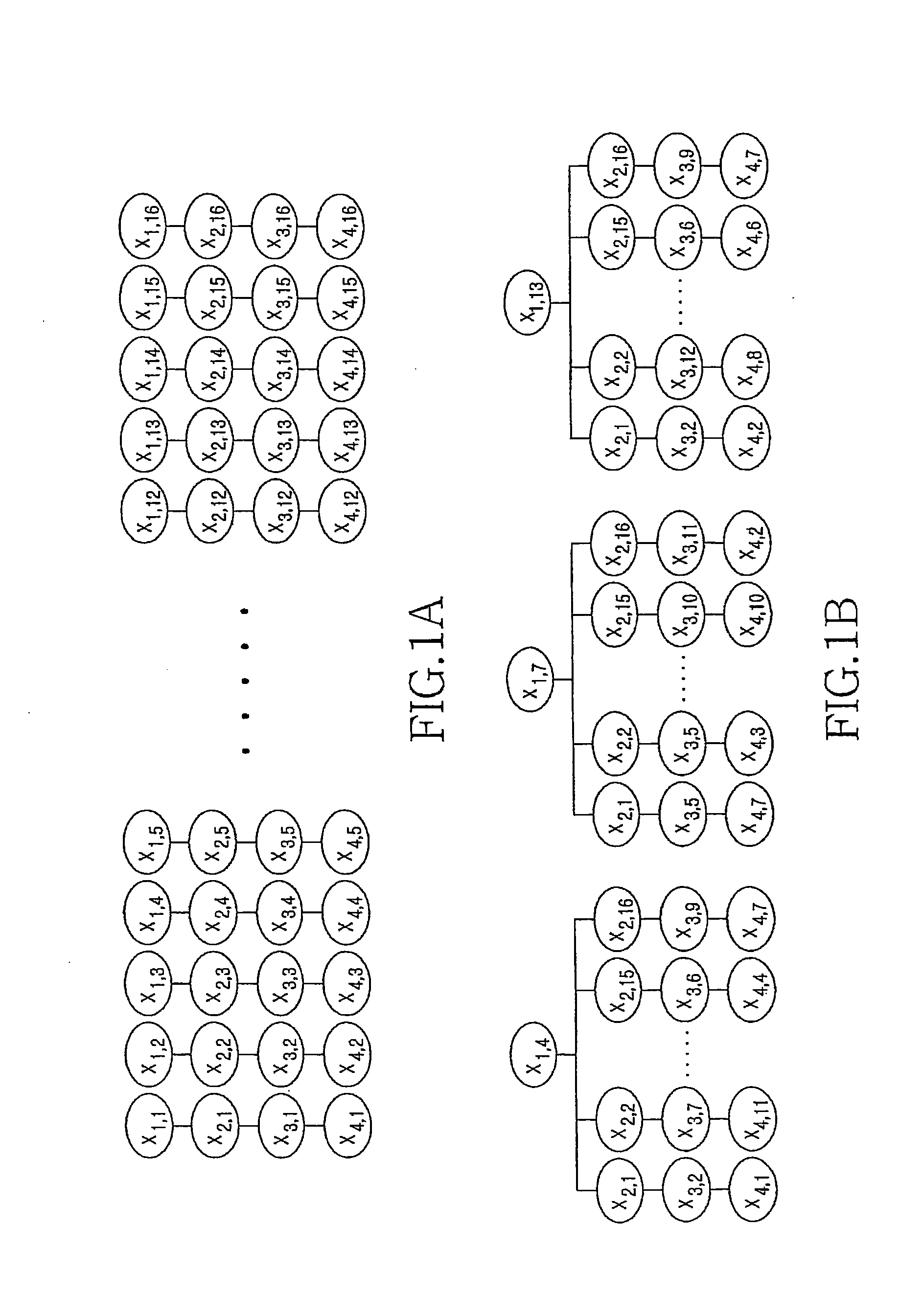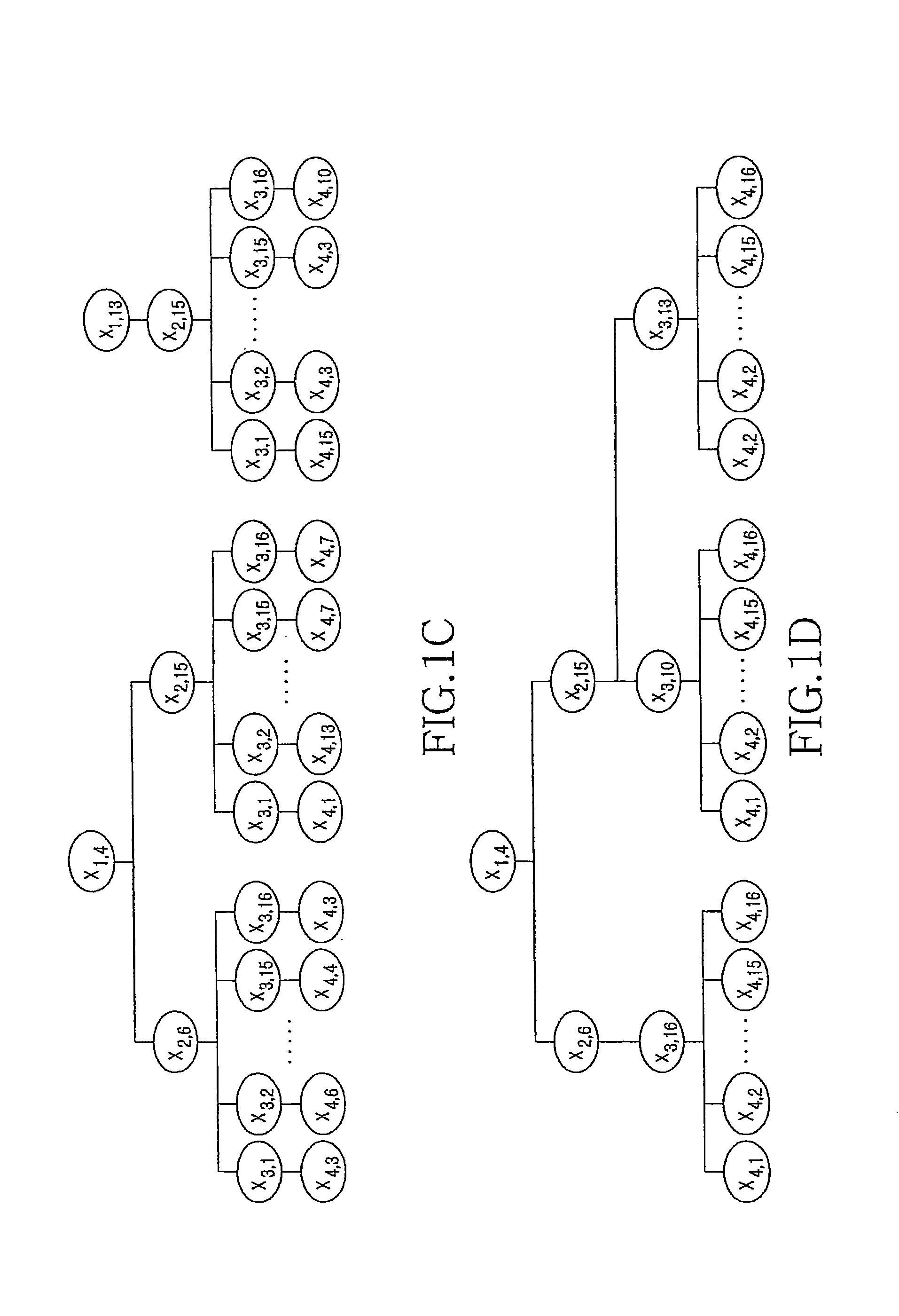Apparatus and method for detecting signal in multiple-input multiple-output (MIMO) wireless communication system
a wireless communication system and receiver technology, applied in diversity/multi-antenna systems, polarisation/directional diversity, amplitude demodulation, etc., can solve the problem of high data rate, high computational complexity of ml methods, and inability to provide good performance. , to achieve the effect of low complexity
- Summary
- Abstract
- Description
- Claims
- Application Information
AI Technical Summary
Benefits of technology
Problems solved by technology
Method used
Image
Examples
Embodiment Construction
[0034]FIGS. 1A through 10B, discussed below, and the various embodiments used to describe the principles of the present disclosure in this patent document are by way of illustration only and should not be construed in any way to limit the scope of the disclosure. Those skilled in the art will understand that the principles of the present disclosure may be implemented in any suitably arranged wireless communication system.
[0035]The present invention provides a signal detecting technique with low complexity and performance similar to a Maximum Likelihood (ML) method in a Multiple-Input Multiple-Output (MIMO) wireless communication system using a Spatial Multiplexing (SM) scheme.
[0036]A channel, a transmit signal, and a receive signal between a transmitter including m-ary transmit antennas and a receiver including n-ary receive antennas are expressed as Equation 1:
H=[h11h12…h1mh21h22…h2m⋮⋮⋰⋮hn1hn2…hnm]y=Hx+ny=[y1y2…yn]Tx=[x1x2…xm]Tn=[n1n2…nn]T.[Eqn.1]
[0037]In Equation 1, xj denotes a t...
PUM
 Login to View More
Login to View More Abstract
Description
Claims
Application Information
 Login to View More
Login to View More - R&D
- Intellectual Property
- Life Sciences
- Materials
- Tech Scout
- Unparalleled Data Quality
- Higher Quality Content
- 60% Fewer Hallucinations
Browse by: Latest US Patents, China's latest patents, Technical Efficacy Thesaurus, Application Domain, Technology Topic, Popular Technical Reports.
© 2025 PatSnap. All rights reserved.Legal|Privacy policy|Modern Slavery Act Transparency Statement|Sitemap|About US| Contact US: help@patsnap.com



